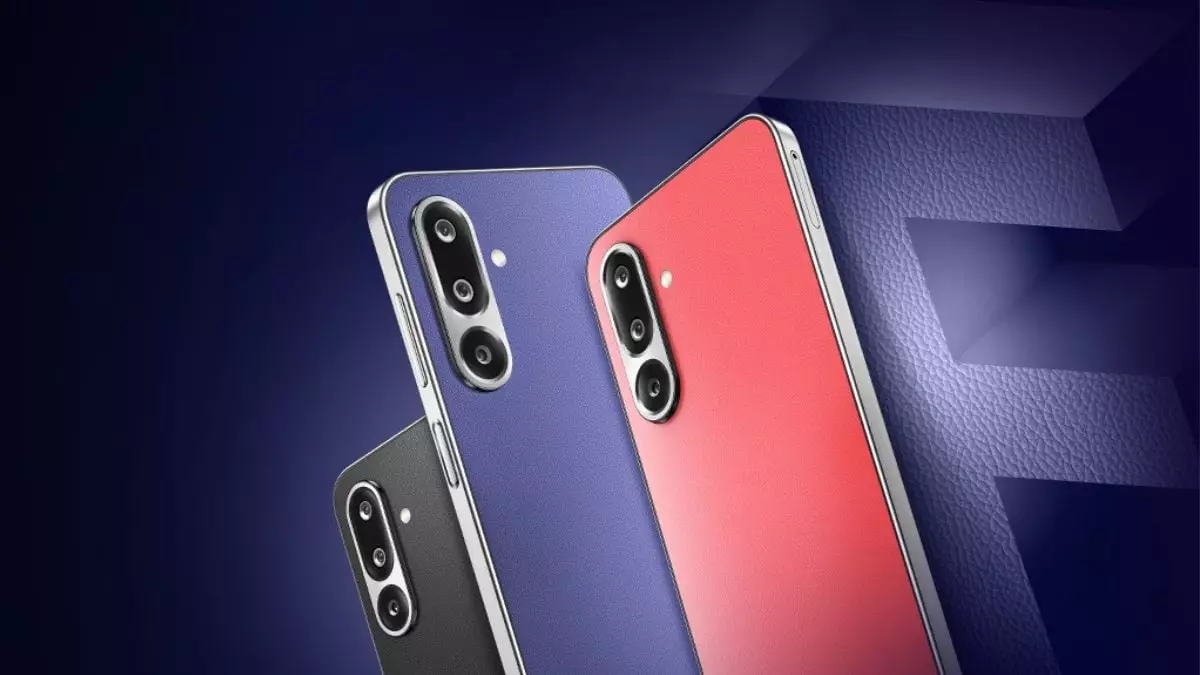When Samsung launches a new model in its F-series, expectations are naturally high—especially given the company’s reputation for innovation and quality. However, the Galaxy F36 5G reveals a more troubling reality: the relentless commodification of smartphones that promise progression but often deliver little beyond superficial upgrades. Positioned aggressively as a budget offering, this device underscores the industry’s obsession with keeping prices low while gliding past the boundaries of genuine technological advancement. It is neither a breakthrough nor a revolution but a calculated marketing ploy designed to attract consumers seeking a “good enough” smartphone without the daunting price tag.
Behind the sleek finish and the promising specs, there’s an uncomfortable truth: Samsung appears to be merely stacking features, hoping the allure of a leather-like back and AI capabilities will overshadow its lack of innovation. The core concern is that such devices prey on consumers’ desire for affordability while subtly reinforcing a cycle of mediocrity—where incremental improvements are mistaken for meaningful progress. The Galaxy F36 5G exemplifies this phenomenon, hiding its shortcomings behind a shiny facade that ultimately fails to challenge the status quo of mid-range smartphones.
Superficial Features Masquerading as Progress
A major disappointment with the Galaxy F36 5G is the focus on hardware that feels more like a checklist rather than a genuine upgrade. The 6.7-inch Super AMOLED display with a 120Hz refresh rate might sound impressive on paper, but its impact is diminished by the overall lack of revolutionary features. It’s a typical mid-range display—bright, vibrant, yet not far removed from what is common among competitors. The Exynos 1380 chipset, although capable, does little to distinguish itself in a crowded market where performance benchmarks are increasingly standardized.
Moreover, the inclusion of premium features like OIS, 4K video recording, and a 50-megapixel primary sensor are presented as major selling points, yet these are standard in many phones within similar price ranges. The triple-camera array, boasting a macro and ultra-wide lens, seems impressive but ultimately serves to mask a camera experience that is far from being powerful or versatile enough to redefine user expectations. What’s most troubling is how these features are packaged together—offering just enough to appear innovative but ultimately falling short of providing a genuinely compelling photo and video experience.
The Illusion of Longevity and Support
Perhaps the most disconcerting aspect of the Galaxy F36 5G is Samsung’s promise of six Android OS updates and seven years of security patches. While on the surface this sounds like a commendable commitment, it raises questions about the industry’s priorities. Why should consumers have to rely on extended update cycles to get a device that is inherently entry-level? It’s a band-aid solution—an attempt to mask the device’s limitations with promises of longevity that don’t necessarily compensate for the hardware’s mediocrity.
This approach reflects a growing trend among major manufacturers: to sell the illusion of a sustainable, future-proof device while prioritizing quantity over quality. It also subtly encourages consumers to accept a device that is barely capable at launch, only to be “kept alive” through software support. Such strategies might boost short-term sales figures but contribute to a throwaway culture where devices are discarded long before they truly reach their potential.
The Con Trick of AI Features and Price Plays
Samsung’s emphasis on AI-driven features such as Google’s Circle to Search, Gemini Live, and Object Eraser seems impressive at first glance. However, these gimmicks are barely differentiating in reality—they are integrations that many competitors are starting to adopt, and they often add little tangible value to the everyday user experience. The real concern is how these “smart” features are used to distract from the more significant issue: the device’s limitations in core capabilities like processing power, camera performance, and overall build quality.
Pricing also plays a crucial role in perceptions of value. Starting at Rs. 17,499, and going up to Rs. 18,999 for higher RAM and storage variants, Samsung intentionally positions the F36 5G as an affordable yet aspirational device. But the price points reveal a subtle reality: consumers are paying a premium for the brand’s perceived reliability and marketing finesse. What they receive is a device that’s more about formatting a budget-friendly package than delivering a truly innovative or durable product.
The Deception of ‘Contemporary’ Design and Durability
The design of the Galaxy F36 5G, with its faux leather rear and subdued color options, aims to emulate premium aesthetics while maintaining affordability. Yet, this superficial elegance can’t disguise the fundamental shortcomings in durability and long-term usability. The device weighs nearly 200 grams, suggesting it’s built more for style than ergonomic comfort, and the plastic and leather-like finish may age poorly over time. Samsung’s decision to include gorilla glass provides some reassurance, but in the broader context, plastic and glass—regardless of coatings—remain vulnerable to everyday wear and tear.
The package’s fire sale is further compounded by average battery life and charging speed. A 5,000mAh battery is decent, but 25W fast charging feels inadequate to meet the demands of modern users. It has become a standard expectation that a budget device should at least guarantee quick top-ups, especially for users who depend heavily on their smartphone for day-to-day activities.
—
Ultimately, Samsung’s Galaxy F36 5G epitomizes the current state of mid-range smartphones: a marketplace filled with devices that look promising on paper but offer little that truly elevates user experience beyond the superficial. It reflects a broader industry trend—one driven more by marketing and cost-cutting than genuine technological innovation or meaningful durability. Consumers should remain cautious—what’s presented as a smart, affordable choice might just be a beautifully packaged mediocrity designed to sustain the status quo.


Leave a Reply